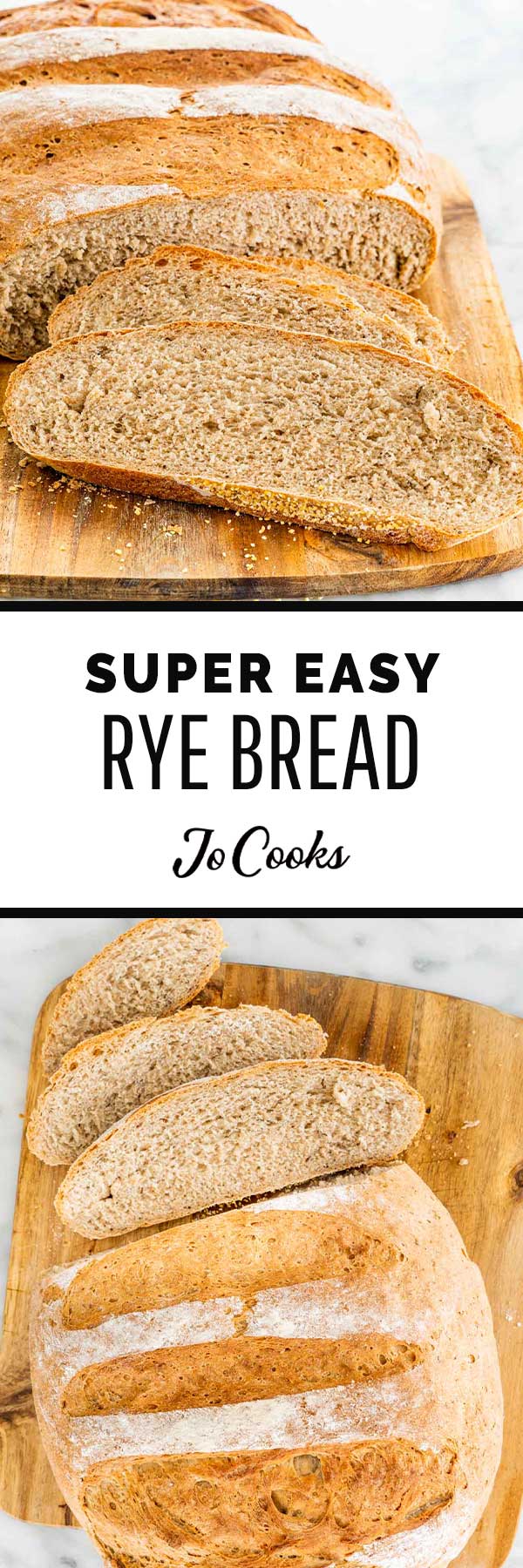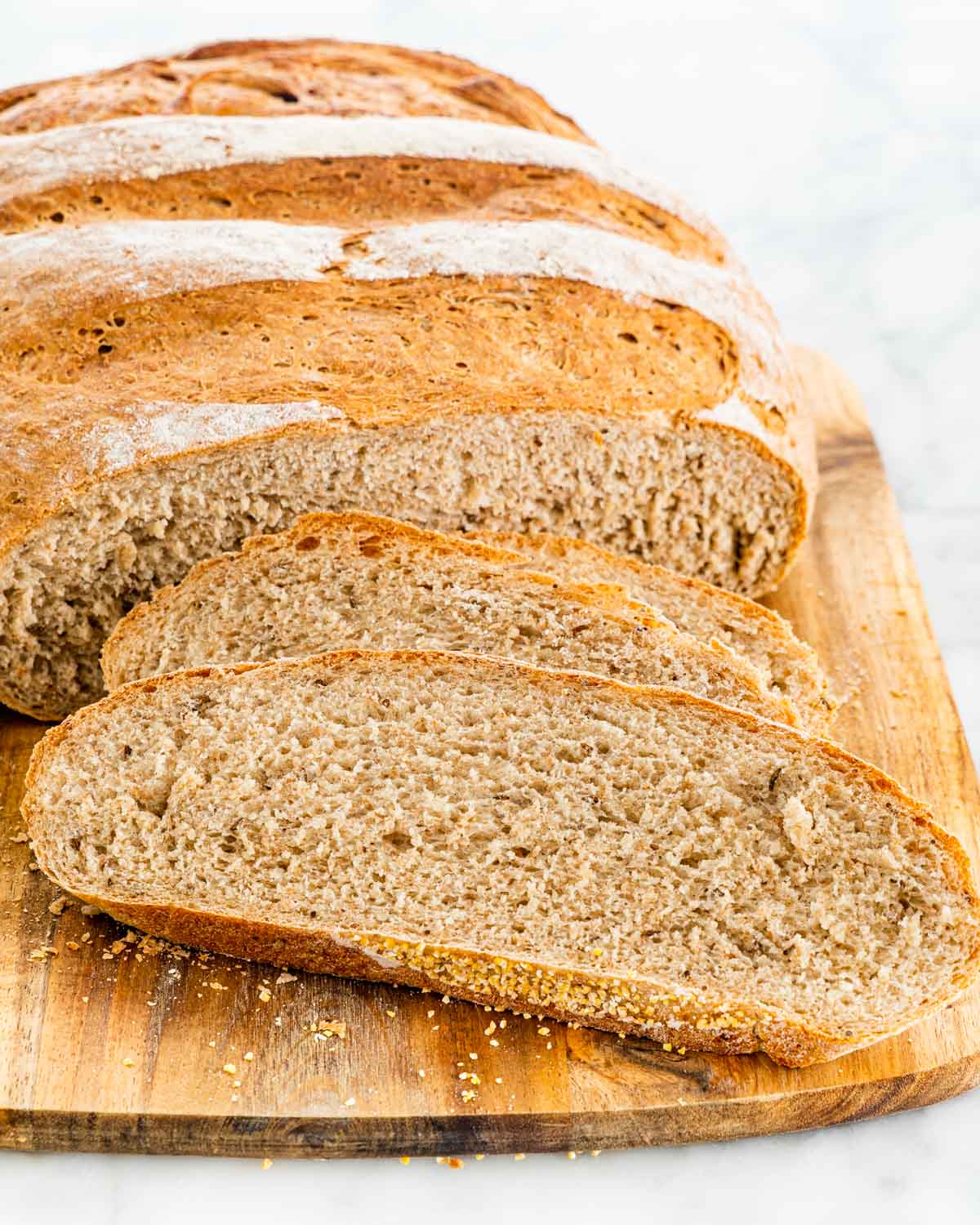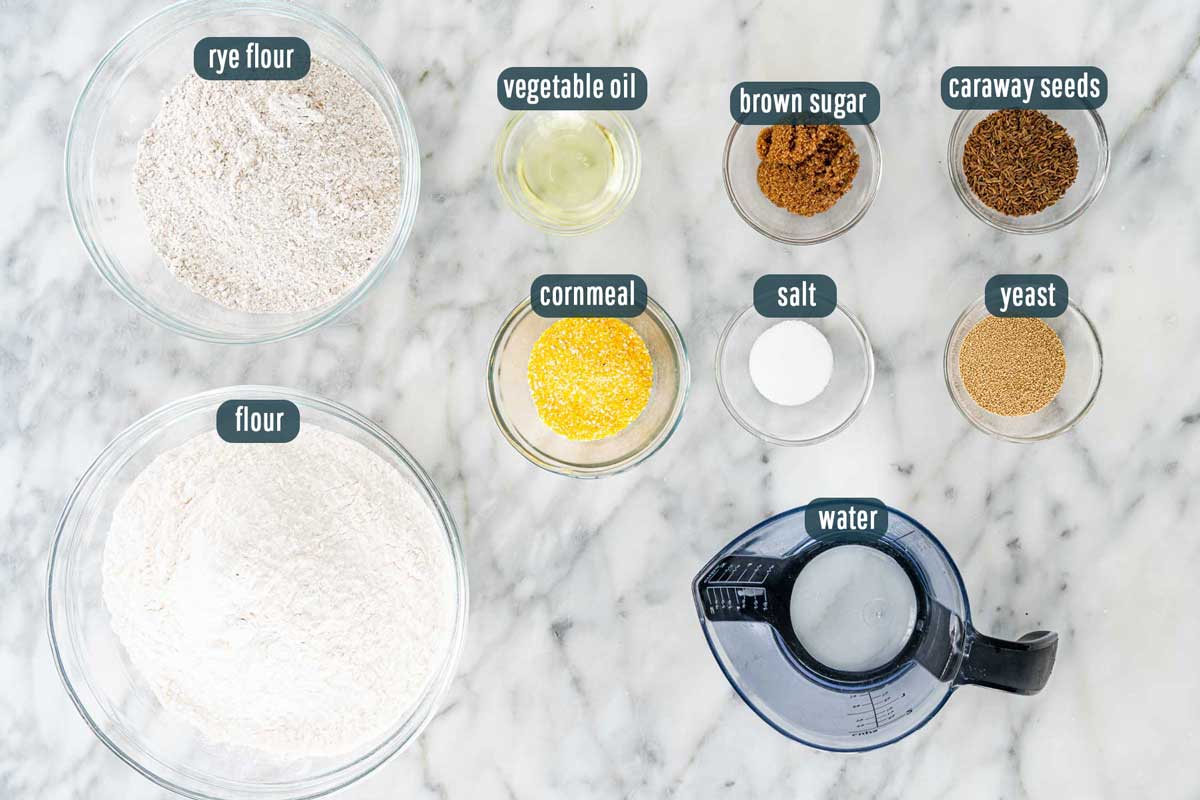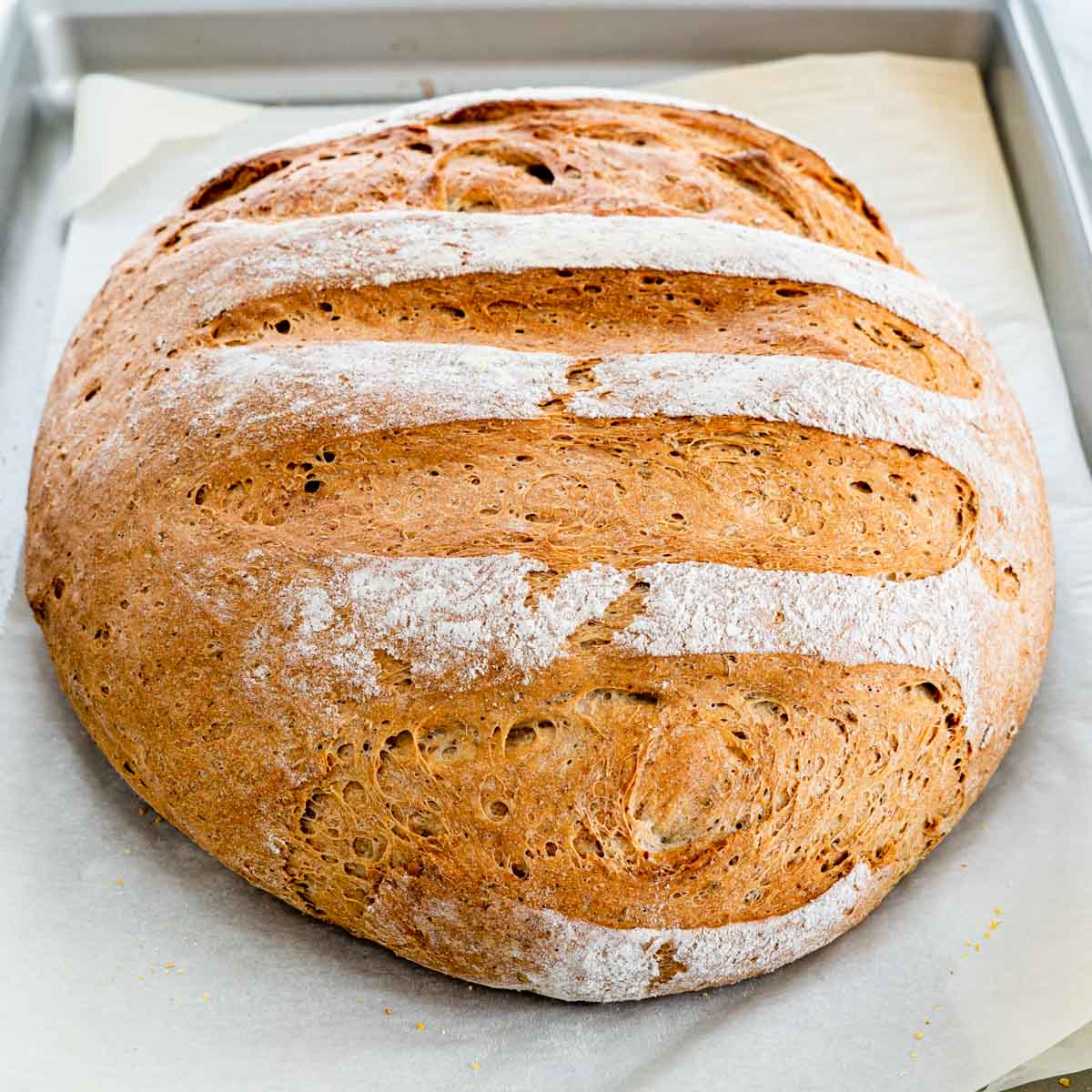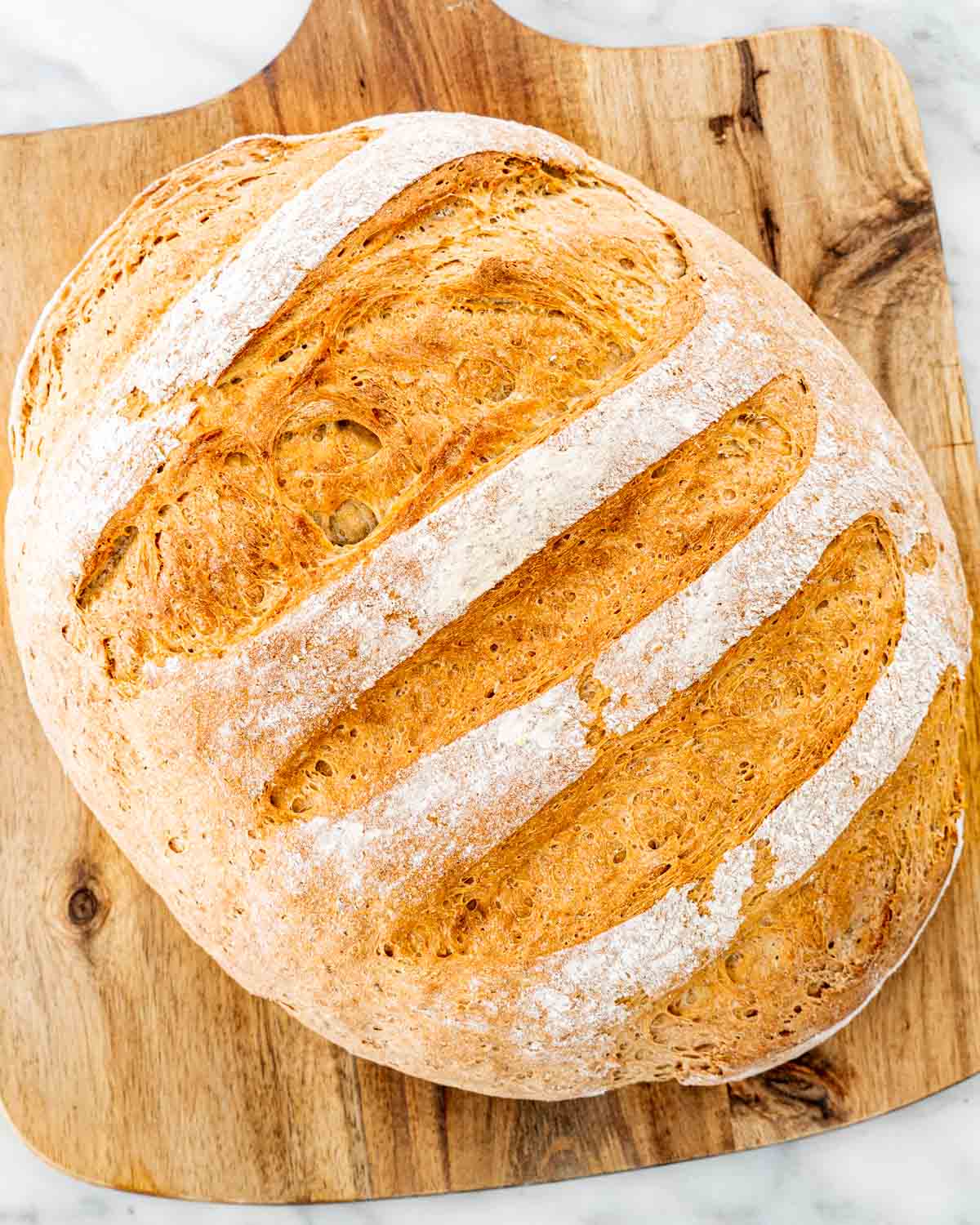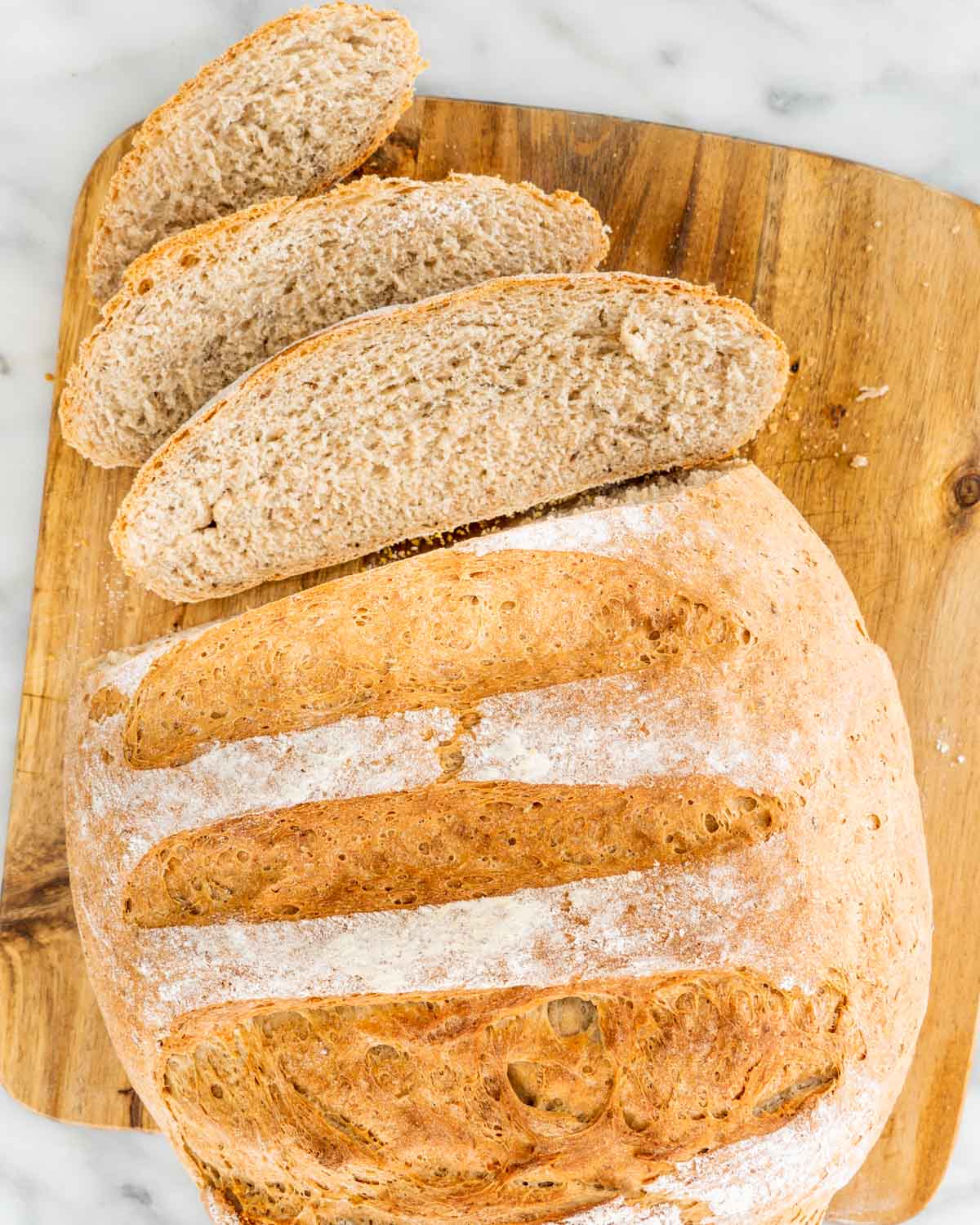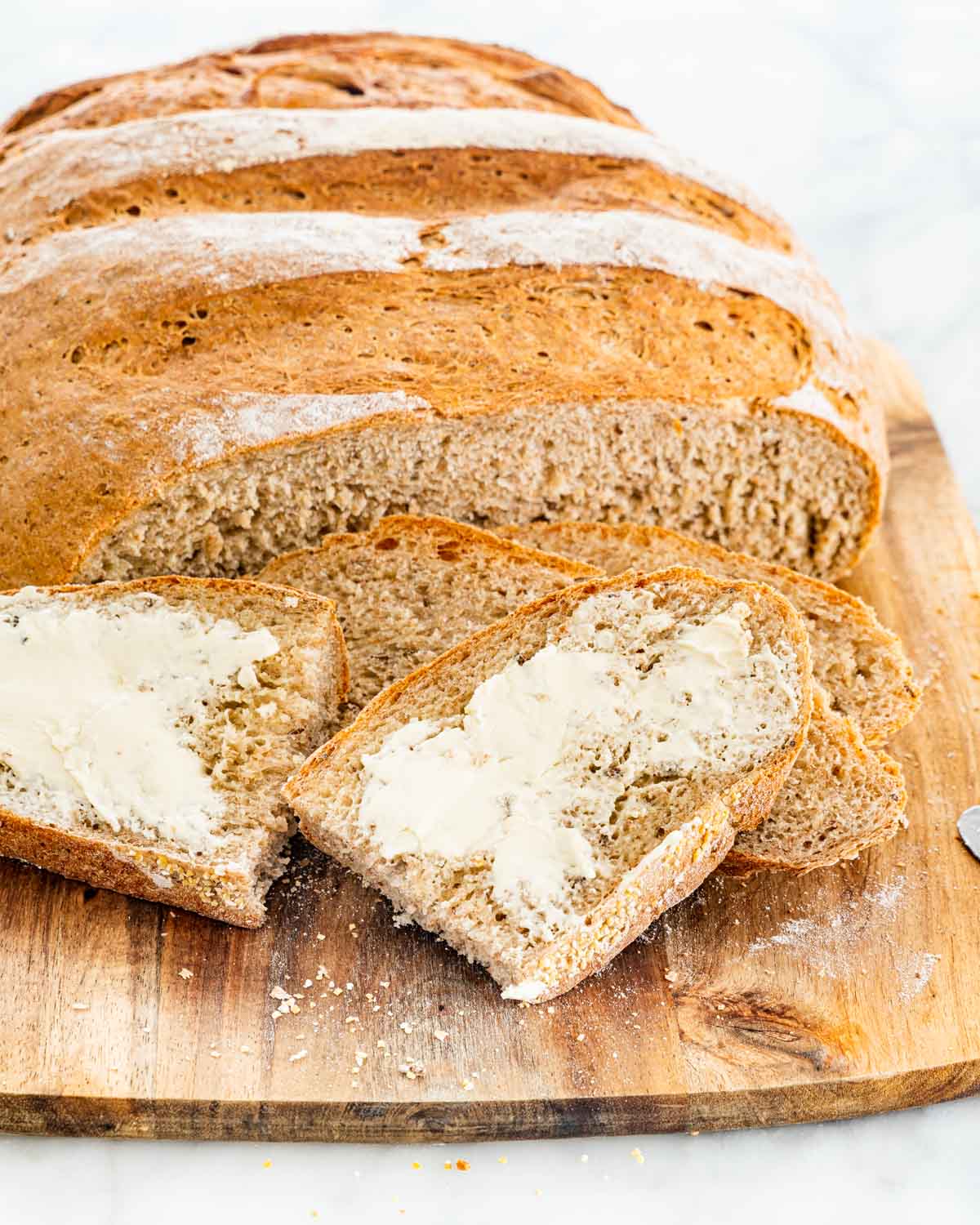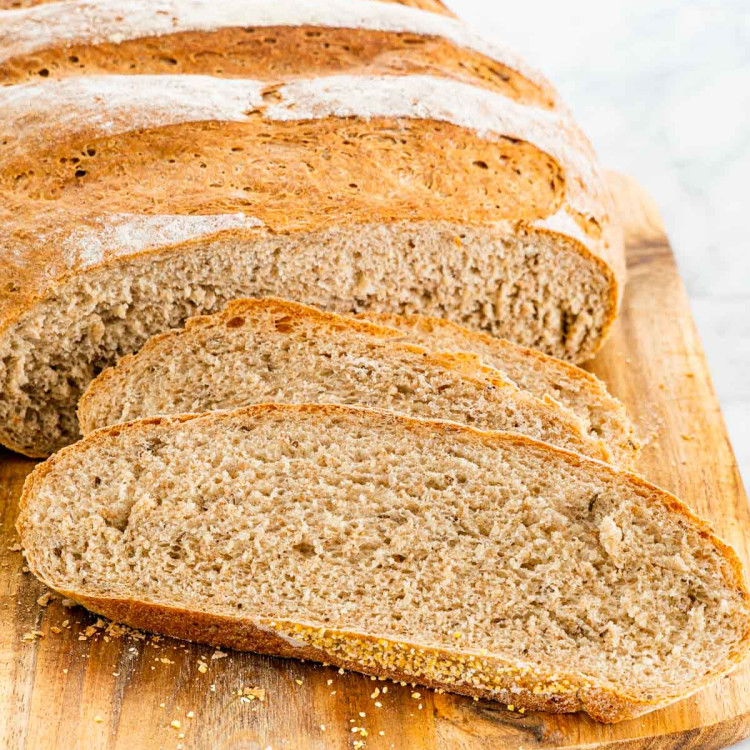The Best Rye Bread Recipe
I’ve been baking up a storm lately! When I have free time on my hands, I always gravitate to my true calling: bread making. Most bread recipes are made with a short list of ingredients and incredibly easy steps. Nothing is quite as satisfying as pulling out a gorgeous homemade loaf from the oven! Not to mention that smell. The aroma of freshly baked bread is absolutely hypnotizing. Especially with the caraway seeds in this loaf of rye bread! You’ll barely be able to contain yourself while it’s baking. Trust me, it’ll all be worth it in the end once you sink your teeth into a slice.
What Is Rye Bread?
This variety of bread is more dense, fibre rich, and a bit darker than whole wheat bread. While the flavor is a bit stronger than typical white or whole wheat bread, the main source of flavor that we all recognize and love about rye bread comes from the caraway seeds. While similar to pumpernickle, rye bread is a little more airy and light. It’s the perfect type of loaf to make when you want to pack a bit more flavor into your bread while still maintaining a great balance between a soft and dense bite.
Yeast – Active dry yeast. If you use instant yeast, you can skip the first proofing step and mix it straight into the flour. Water – It’s super important to make sure your water is lukewarm. The best temperature of the water should be anywhere from 95 degrees to 105 degrees for this. You don’t really want anything warmer, as it will kill the yeast. Brown sugar – While granulated can be used instead, brown sugar will give your bread a deeper flavor. Salt – To taste. Caraway seeds – The classic flavor of rye bread comes from caraway seeds. Make sure they’re fresh, and not stale. Vegetable oil – Canola or olive oil will work too. Flours – Rye, and all purpose. You can also add in a bit of whole wheat flour, so for example instead of 3 cups of all purpose flour, use 1 cup whole wheat flour and 2 cups all purpose. Cornmeal – For dusting.
How To Make Rye Bread
How to tell when my bread is done baking
Every oven is different. Not sure if your bread is done? Turn the loaf upside down and give the bottom a firm thump with your thumb. It’ll sound hollow when it’s done. You can also use an instant read thermometer. Insert the thermometer into the thickest part of the loaf. It’ll read 200F when the bread is completely done.
Best place for your dough to rise
Dough thrives in a warm, draft-free environment. If your oven has a “proof” function, then use it. The “proof” function preheats the oven to 100 F degrees, causing a warm, but not hot environment for your dough to rise nicely. If your oven doesn’t have this “proof” function, I would still use the oven. What I usually do is preheat the oven to 200F degrees, or whatever the lowest setting is for it. Once it reaches that temperature, turn off the oven, then place the dough in there to rise. This will speed up the proofing process tremendously.
My dough isn’t rising!
The most important part about bread baking is the yeast. If you are having trouble getting the dough to rise, this is an issue with your yeast.
Make sure your yeast is new. Even if it’s close to the expiry date but not past it, the yeast may be dead. If the yeast doesn’t foam up in step 1, stop. The bread will not rise. This can be one of two issues: The water was too hot and killed the yeast. You just want want lukewarm- about 110F/43C. The yeast is dead and you’ll need a new jar. Yeast thrives in a warm environment. Preheat your oven to the lowest setting, then turn it off. This is a perfect draft-free place for your dough to rise. Last, but DEFINITELY not least, store your yeast in the freezer and it’ll stay fresh much longer.
What to serve with your freshly baked bread
You can make some gorgeous sandwiches:
Rueben Sandwich Waldorf Salad Tuna Salad The Best Chicken Salad Smoked Salmon and Veggie Sandwiches
Or serve it as a side to soak up these saucy dishes:
Chicken and Mushrooms in Creamy Dill Sauce Beef Ragu Instant Pot Swedish Meatballs Beef Barley Soup White Chicken Chili
How to store homemade rye bread
The bread will need to be fully cooled down to room temperature before storing. Keep your loaf in a bread box, large freezer bag, airtight container, or cake plate with a dome to ensure it doesn’t go stale. It’ll last 3-4 days at room temperature or 6-9 days in the fridge.
How to freeze homemade rye bread
Wrap the loaf well with both plastic wrap and foil. It’ll last frozen for 3 months. Let it thaw at room temperature, or you can use your microwave if it has a bread function.
Looking to expand your bread baking repertoire?
No Knead Bread Homemade Croissants Ciabatta Artisan Bread White Bread Recipe No Knead Skillet Bread Cinnabons Cinnamon Rolls Raisin Bread Slow Cooker Bread Brioche Bread Recipe
